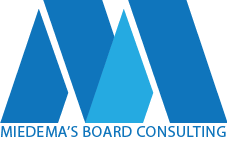Who are the owners of a nonprofit? Some might say the owners are the members of the organization since they have the voting control. Others might say the organization has no owners since it is a nonprofit corporation. Still others could say that it is owned by everyone since it exists for a public benefit. Which answer is correct? It is important for a board to understand to whom it is accountable.
There is likely a fairly simple legal answer to the question of ownership but the more interesting question for a board to wrestle with is who thinks they have an ownership stake in the organization? These groups or individuals are called the moral owners are there are several views on how to identify them. John Carver defines owners as “the group on whose behalf the board governs” (Boards That Make a Difference, Pg 376) and he includes clients, students, patients, staff, taxpayers, donors, neighbours, citizens, peers and suppliers on his list of potential moral owners. Carver recommends that boards differentiate between stakeholders, moral owners (who are a subset of the stakeholders) and beneficiaries to better understand and define their responsibilities to the various groups. He states that the “test for ownership is not with whom the board makes a deal but whom the board has no moral right not to recognize” (ibid, Pg 188).
Jim Brown describes moral owners in the context of purpose-centered ownership. This would be “the group of people fully aligned with the whole purpose of the organization – or on whose behalf the organization was created” (The Imperfect Board Member, Pg 124). In conversation with Brown recently he emphasized the importance of boards understanding the difference between donors who are customers (transactional) and donors who are moral owners (faithful supporters who are fully aligned with the vision and mission).
Both these governance experts would agree that a board needs to carefully identify their moral ownership so they can consult with this group when making or approving any significant changes to the organization. A case in point is St Joseph’s Healthcare which learned the concept of ownership the hard way last week. The organization chose to remove the cross from their logo and faced the ire of major donors and over 3000 people who signed a petition after the new logo was revealed. Some might say a logo change is an operational issue but when the change speaks to the historic mission and values of the organization, it quickly becomes a strategic board issue. The decisions about the logo were made by a group of physicians, management and board representatives which seems well represented however it is clear from the media reports that donors and patients also saw themselves as having an ownership stake.
The reason for carefully identifying moral owners is to help the board stay focused on the vision, mission and core values. A board can be swayed from its vision and mission by groups such as transactional donors and beneficiaries if it mistakes them for moral owners. Transactional donors may ask the organization to compromise on its mission or values in order for the donor to achieve their objectives. The temptation to follow donor money can be very strong. Beneficiaries, on the other hand, can have a multitude of needs and pull the organization away from its original purpose.
Board members have a difficult task of discernment. They must know and understand the organization’s founding vision and mission, assess the current environment, take potentially widely diverse opinions into account and then decide on the future direction. Understanding to whom the board is accountable is an important part of the process.







